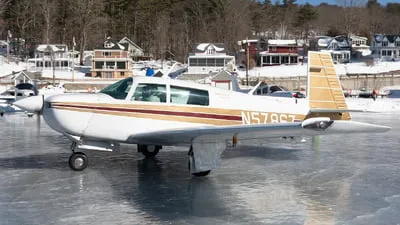Aircraft Upgrade Priorities: The Autopilot vs. Paint Dilemma
In my thirty years as an aircraft appraiser and ownership consultant, I’ve helped hundreds of owners navigate the challenging decisions that come with limited upgrade budgets. The MooneySpace discussion about prioritizing autopilot versus paint perfectly encapsulates the fundamental tension in aircraft ownership—balancing functional improvements against aesthetic ones. From my professional perspective, this decision ultimately hinges on how you use your aircraft and your long-term ownership plans. For frequent IFR pilots who fly longer cross-countries, a modern autopilot represents a significant safety enhancement that reduces workload during critical phases of flight. I’ve seen countless owners who initially prioritized cosmetics come to regret that decision during that first fatigue-inducing IFR flight in challenging conditions. Conversely, for predominantly VFR pilots with mostly local operations, the substantial investment in a high-end autopilot might indeed be better directed toward paint that will protect the airframe and enhance resale value. What I found most valuable in this thread was the nuanced middle-ground approach several experienced owners advocated—addressing exterior corrosion protection while budgeting for incremental avionics upgrades. Having guided owners through these decisions for decades, I can affirm that the wisest approach often involves stepping back from the either/or proposition to develop a strategic upgrade roadmap that aligns with your actual mission profile and ownership timeline.

A detailed MooneySpace forum thread explored the decision between upgrading the autopilot or repainting on a 1996 Mooney Ovation with an otherwise upgraded panel and new engine. The original poster described having a functional but outdated STEC 30 autopilot and deteriorating paint showing signs of corrosion, seeking community input on which upgrade to prioritize with a limited budget. The discussion quickly expanded into a nuanced exploration of ownership priorities, mission profiles, and value considerations. Several experienced owners emphasized that modern autopilots like the GFC 500 represent significant safety improvements, particularly for IFR operations, with many sharing personal experiences of reduced workload and enhanced situational awareness. Conversely, multiple contributors highlighted that paint serves both aesthetic and protective functions, with corrosion prevention being a critical consideration for long-term ownership. The thread revealed several important technical considerations, including compatibility issues between the GFC 500 and older G500 TXi systems, with several avionics experts recommending obtaining detailed quotes for the specific configuration. Financial perspectives varied widely, with several owners arguing that autopilot investments rarely return their full value at resale, while others noted that corrosion issues discovered during paint preparation could lead to unexpectedly high costs. A substantial minority suggested alternative approaches, including more affordable limited paint work focusing on areas showing corrosion, refurbishing the existing autopilot, or exploring intermediate upgrade options like the STEC 3100. By the thread’s conclusion, a general consensus emerged that for predominantly IFR pilots, the autopilot would provide greater utility and safety benefits, while those primarily flying VFR might benefit more from addressing paint issues. Several experienced owners offered the pragmatic advice to develop a multi-year upgrade plan rather than viewing the decision as an either/or proposition. Check out the full discussion over on MooneySpace for detailed cost considerations and technical compatibility information from Mooney owners with both autopilot and paint experience.